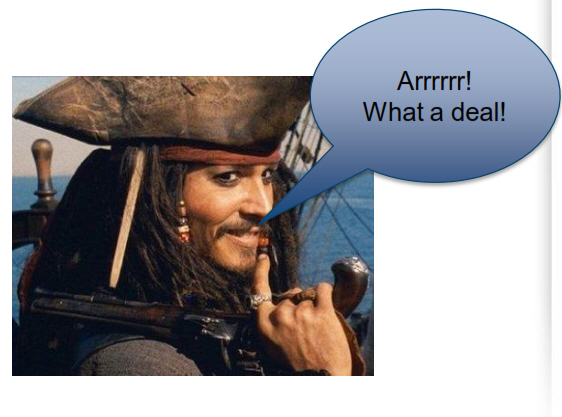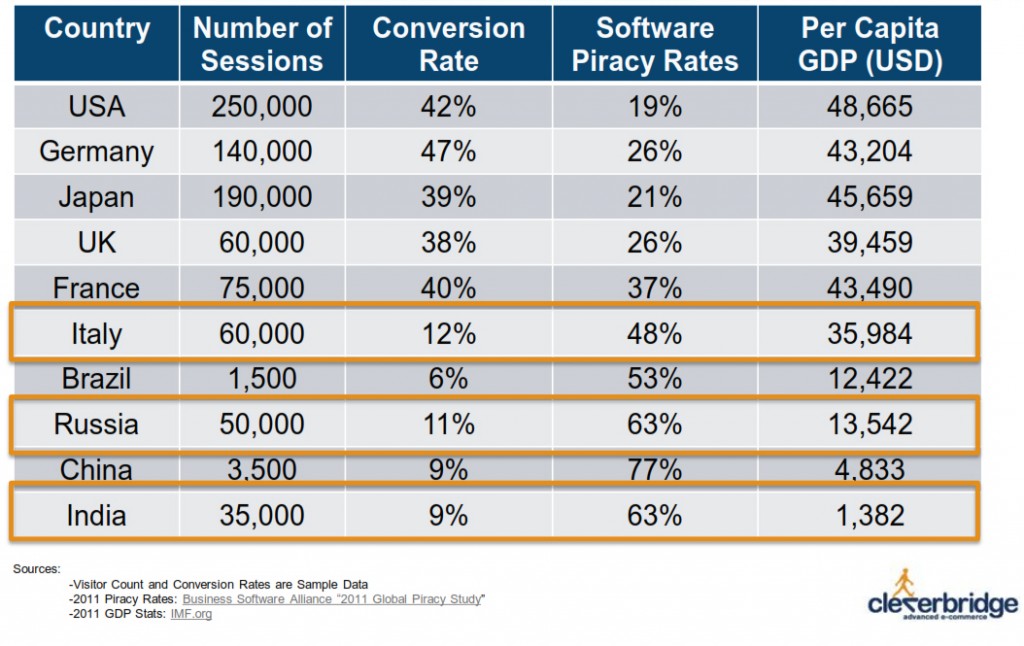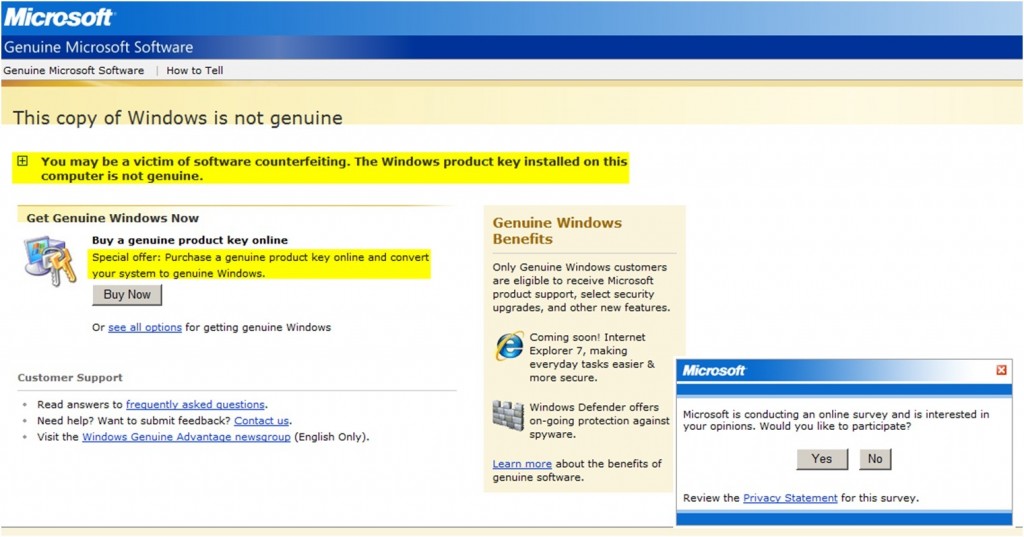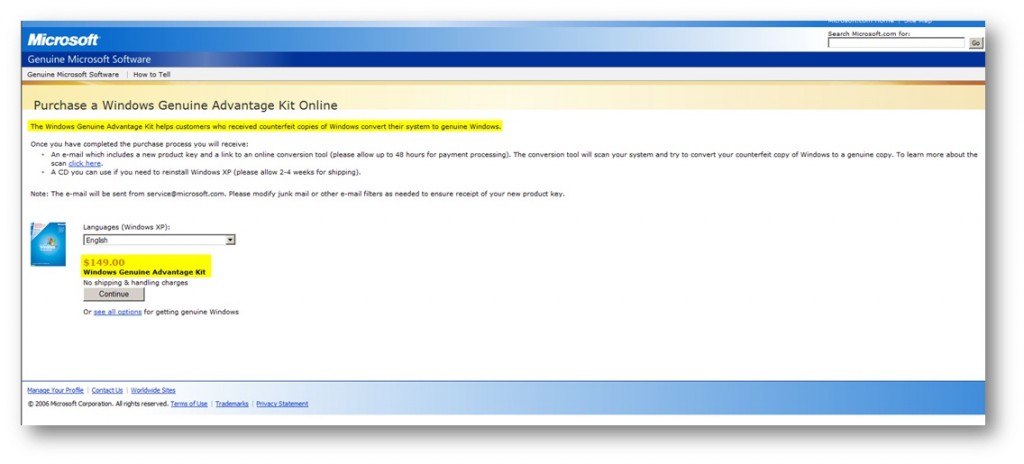One of the many serious problems facing software companies is software piracy. The numbers don’t lie. According to the Business Software Alliance’s 2011 study of global software piracy, 57% of the world’s computer users admit they pirate software. In 2011, the commercial value of pirated software grew to an astounding $63.4 billion.
We hear the same narrative from software companies again and again, “Yes, piracy is a problem and it does have a negative impact on our business. We also know that software pirates tend to gravitate towards products with the highest demand. So a high demand among paying consumers often translates into more piracy from users.”
However, rather than chalking up pirated users as lost revenue, there are ways to salvage some value from those illegal users by opening up a previously unknown revenue channel.
Protect your software
The first step in combating software piracy is to protect software with license keys or DRM solutions that are able to communicate with a central server. If a product has the ability to “phone home” to a central server, then the product has the ability to inform the system that someone is using the product without paying, and access can be shut off immediately.
Without these protective capabilities, license keys become up-for-grabs on the Internet. And there’s nothing to be done about it. When companies have the ability to identify pirated versions of their software, they build a key part in the process of converting pirates into paying customers.
Locating software piracy
After protecting software against pirates, the next task is to identify those countries where software piracy is prevalent.
In the sample table below, consumers in the USA, Germany and Japan bring high volumes of traffic and convert at a relatively high rate. Conversely, consumers from Italy, Russia and India also bring significant traffic but do not convert as well as customers from the USA, Germany and Japan.
As we noted in a previous post, high traffic, combined with low conversion rates and low per capita GDP, indicate that a high price might be scaring visitors away from submitting payment. This is the time to start price testing by researching competitor prices and local purchasing power.
The table above factors in a new piece of data: the likelihood of people pirating software. More often than not, software piracy tends to occur in regions with lower purchasing power. In 2011, the commercial value of pirated software in emerging markets more than doubled the value of pirated software in mature markets. Through observing an inverse relationship between piracy rates and purchasing power, we can assume that lower price points will be more attractive to software buyers in emerging economies.

Converting software pirates
Capturing value on the initial sale, before the user acquires a pirated version, is obviously ideal, but software companies can also take steps to convert pirate users to paid users by offering strong product discounts.
As DRM and wrapping solutions evolved, software publishers gained more insight into their users’ information than ever before. Many companies can now see who is using their products illegally, and there are many mechanisms for communicating directly with those pirated users.
Rather than pointing fingers or casting blame, take a more understanding and accommodating approach to your illegal user-base. Use human, friendly language with the pirates. Consider writing encouraging promotional ad copy, such as, “We’re happy to have you as a user, but we think you’ll be a lot happier with a fully functional version of our software.”
Also, be sure discounts go far enough to compel a sale. Offering 5% or 10% off the paid version will do very little to tug on the purse strings of a software pirate.
Here’s an example of how Microsoft tried to convert pirate users of Windows XP to paid customers.
The highlighted portion reads, “You may be a victim of software counterfeiting. The key installed on this computer is not genuine.” Below this message is an offer to purchase a genuine version of the product.
Microsoft isn’t accusing the customer of software theft. Rather they’ve made the customer a victim and have alerted him to the benefits of a fully paid version. If the user clicks on the offer, they are presented with a 60% discount on the product (Retail price for Windows XP Professional was $249.00 at the time of this offer).
The right price for a discount can be determined by the relative price points of your targeted regions. For example, in the sample table above, the markets of Italy, India and Russia, have different per capita GDP stats. Use those per capita GDP numbers to propose new price points for each market.
In Italy, with the highest per capita GDP, set the discount at 25%. For Russia, middle of the pack in purchasing power, set the discount at 50%. And finally for India, with the lowest average purchasing power, be very aggressive in pricing with discounts of 75%.
With new price points in mind, use Geo-IP detection in the cart to serve the correct pricing to the correct customer. A shopping cart should be set up in such a way that a customer can’t simply change his or her country selection and see a heavily discounted price. Only those customers from an IP address in a heavily discounted region should be eligible to see that price.
Revenue is the lifeblood of any business and converting visitors into paying customers is the ultimate source of revenue. The more people stealing license keys or downloading hacked software via torrents, the less people submitting payment via shopping carts.
Keystone
By protecting software and targeting specific regions for conversion optimization, software companies can offer discounts to software pirates as a way to drive revenue from an unexpected opportunity.




I think it is worth noting that advertising your products in countries that have high piracy rates will likely increase the amount of cracked versions of software that exist online. Pirated software usually originates from countries lower purchasing power, so creating more demand for your products through advertising in those countries can actually make cracked version more readily available for people in all countries. This can then reduce your conversion rates in countries that typically have higher purchasing power (because it is easy to find a crack).
Hi Mark,
I think that you make a good point and agree that incenting bad behavior is usually not a good idea. I certainly would ensure that any online advertising done is treated in the same way as conversion rates: by country. Don’t focus good money on a low converting country without a bigger strategy of how to monetize those customers. That’s what this article tries to do in highlighting a way to monetize some of those low converting countries that are caused by low purchasing power.
Have you tried something like this idea for your customers, Mark? Anything that you could share for others reading this discussion?
cheers,
craig.
Yes definitely, it’s not only your advertising but also your affiliates. I think that many software companies have affiliates in the countries we are speaking about here because there is usually low risk to bringing on an affiliate, no matter the country. This is because there is no expense to bringing the affiliate on and if they drive sales then that is a good thing. But if these affiliates then promote your product for you in these countries then that will drive demand for your products and potentially encourage piracy.
What I am trying to say is that some companies might be promoting their products in these countries without deliberately trying to.
As for what to do with pirated users, I consider piracy a form of flattery that your software is well respected and desired but obviously it would be better if they were a paying customer. There are two things that I think work well for making them a paying customer:
1. Keep updating the software all the time. If you keep bringing out new versions with new features then people using cracked version may have a desire for the newer version. Usually a crack for new versions of the software takes some time to surface on the web. If a customer with a cracked version of the product really wants the new version they may get impatient and just buy it.
2. Give paying customer access to web content or some login area of your site with additional features that they can only get access to with a valid license key. This will be something pirated software users will not be able to get and may want if you make it valuable enough.
Here are two ways to help stop people cracking your software in the first place:
1. Make the software only work as a fully functioning version when it is code signed with your vendor certificate. The first thing someone trying to crack the software will do is edit the executable and break that code signing. If you make sure the product will not work if it is not code signed that will make it harder to crack.
2. Make the product have to communicate to the web to as a part of the functionality of the full version. If your the core functionality of the product does not need a web connection (ie the full functionality of the product works while offline) and a web connection is only made to check a license key then it is quite easy for someone to create a version of the software that does not make that license check call to the server and just remains in an active state without ever checking the web.
Mark
In emerging economies, unless a particular software comes under vital category (like a CAD software for an architect) it will get pirated. The main issue here is the purchasing power and lack of robust business models. For example a license of Windows Home premium costs Rs.7500/-, approx ($125) while the monthly revenue of an average working person is less than Rs.30,000 ($500). Do you think, he will spend one forth of his income for a software product in the ever spiraling increase in cost of living?
Primarily local hardware vendors boosted piracy to just sell the computer and most users think that software (including OS) is a complement they are getting while buying a computer.
Thereby companies have to change their strategies as follows:
– Localize the package with the country specific customizations (stripping all unwanted features and adding few local features)
– Price the localized package properly so that it will be affordable (Eg: Rs.50 / $1) per month per PC
– Don’t sell, just help your customers crave for it and buy…Bring campaigns on values and strengths of the product, not on the product.
– Make it available everywhere – in every super market as a POS item (with one CD, which can be installed but need to be activated online / telephone by paying) within few days.